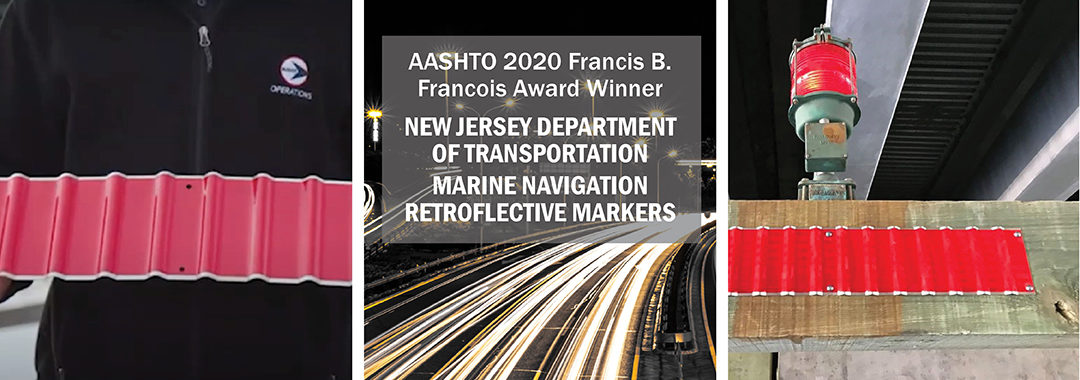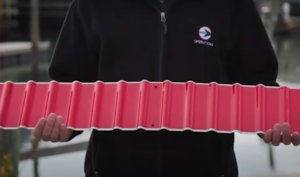Adoption of new technology and innovative solutions is pivotal to improvements in transportation systems and New Jersey Department of Transportation (NJDOT) is adopting innovation in its projects to increase safety and efficiency, and reduce costs. The American Association of State Highway and Transportation Officials (AASHTO) recognizes these efforts through its Francis B. Francois Award for Innovation. The award enables the winning state to fund a $10,000 graduate fellowship at a state university of the winner’s choosing. In 2020, 36 state DOTs nominated 79 projects and AASHTO awarded its Francis B. Francois Award to NJDOT for the innovative use of retroreflective markers for marine navigation.
Marine Navigation Retroreflective Markers are an innovative addition to the traditional lights required by the U.S. Coast Guard (USCG) on bridge fenders. The State of New Jersey owns and maintains 65 bridges that cross navigable waterways. Lighting equipment is used on bridge fenders to aid navigation through the channels underneath the bridges. Any failure of these lights creates a safety hazard and requires emergency repairs. Upon detection of a light failure, a work order is issued by NJDOT for an emergency crew, incurring costs due to lost productivity and overtime pay. In addition, the USCG may impose a penalty of $25,000 per day per incident. The genius of the innovation is in the installation of retroreflective panels, typically used on highways, which are themselves inexpensive. As a backup for the navigation lighting, these panels maintain safety for boaters, and help to ensure the safety of repair crews as work can now be carried out during daylight hours rather than immediately — irrespective of daylight or harsh weather conditions. This cost-effective solution makes navigation safer and reduces the burden of maintenance. The USCG has approved NJDOT’s Marine Navigation Retroreflective Markers as a backup to the navigation lighting system.
The Marine Navigation Retroreflective Markers can easily be adopted by other NJ agencies and other state DOTs as backup lighting for navigating waterways under bridges.





